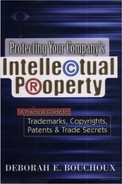Works Made for Hire
Although the general rule is that the person who creates a work is the author of that work, there is an exception to that principle: works made for hire. If a work is made for hire, the employer (not the employee) or the party who commissioned the work is considered the author of the work.
Under copyright law, works created by employees during the course and scope of their employment are owned by their employers. To claim copyright rights, individuals often allege that they are not employees but are rather independent contractors who retain the copyright in their works. To determine whether an individual is an employee or independent contractor, courts examine a variety of factors. If the hiring party exercises control over the work by determining how the work is done, provides equipment and supplies, and provides a location at which the work is done, such tends to show an employment relationship. Similarly, if the hiring party exercises control over the hired party by controlling his or her schedule, assigning other projects to the party, hiring assistants for the party, or determining the method of payment, such also tends to demonstrate an employer–employee relationship. Finally, courts examine the status and conduct of the hiring party. If that party provides benefits, withholds tax from the hired party's payment, and is in business to produce works of the type created by the hired party, such tends to show that the hiring party is an employer. These factors are not exclusive, and courts are free to make other inquiries. In general, however, a regular, salaried arrangement supports an employer–employee relationship.
If the party is an employer, he or she is viewed as the author of any work created by the employee while on the job. Thus, if an employee in a department store's advertising group creates a new logo for the company, the company owns the work. However, if the employee writes a song over the weekend, the employee owns the song because it was not created in the scope of the employee's duties.
Companies or individuals who hire independent contractors to perform tasks may still own the works created by the independent contractor if two factors exist:
The work is specially commissioned or ordered for use as a contribution to a collective work, a part of a motion picture or other audiovisual work, a sound recording, a translation, a supplementary work, a compilation, an instructional text, a test, answer material for a test, or an atlas.
The parties expressly agree in writing that the work is made for hire such that the commissioning party owns it.
If the commissioned work does not fall within one of these categories, the party commissioned to create the work owns the copyright in it. Thus, if ABC Inc. retains Sally, an independent contractor, to paint a portrait of ABC's founder for the company lobby, Sally retains the copyright to the work. ABC owns the physical painting but Sally retains the exclusive rights to reproduce and make derivative works based on the portrait because paintings do not fall within the categories of works just listed. If ABC Inc. then orally retains Tim to prepare a test for prospective employees, Tim owns the copyright in the test. Although the test falls into one of the specially enumerated categories, the parties did not agree in writing that the work would be made for hire. Thus, Tim retains copyright rights in his work.
The effect of a work made for hire is that the employer or commissioning party is the author of the work (and should be identified as such in the copyright application) and is the owner of the copyright who possesses the bundle of rights discussed in Chapter 9, including the rights of reproduction, adaptation, distribution, performance, and display.
Companies should have employees and independent contractors who will be creating copyrightable works sign agreements verifying that any work created is made for hire. A good agreement should go beyond this and state that if for some reason it is later determined that the work is not one made for hire, the employee or independent contractor thereby automatically and irrevocably transfers and assigns the work to the employer or commissioning party. See Figures 19-1 and 19-2 for forms of clauses that can be used by employers or those who retain independent contractors to ensure that they own the copyright in works created for them.
